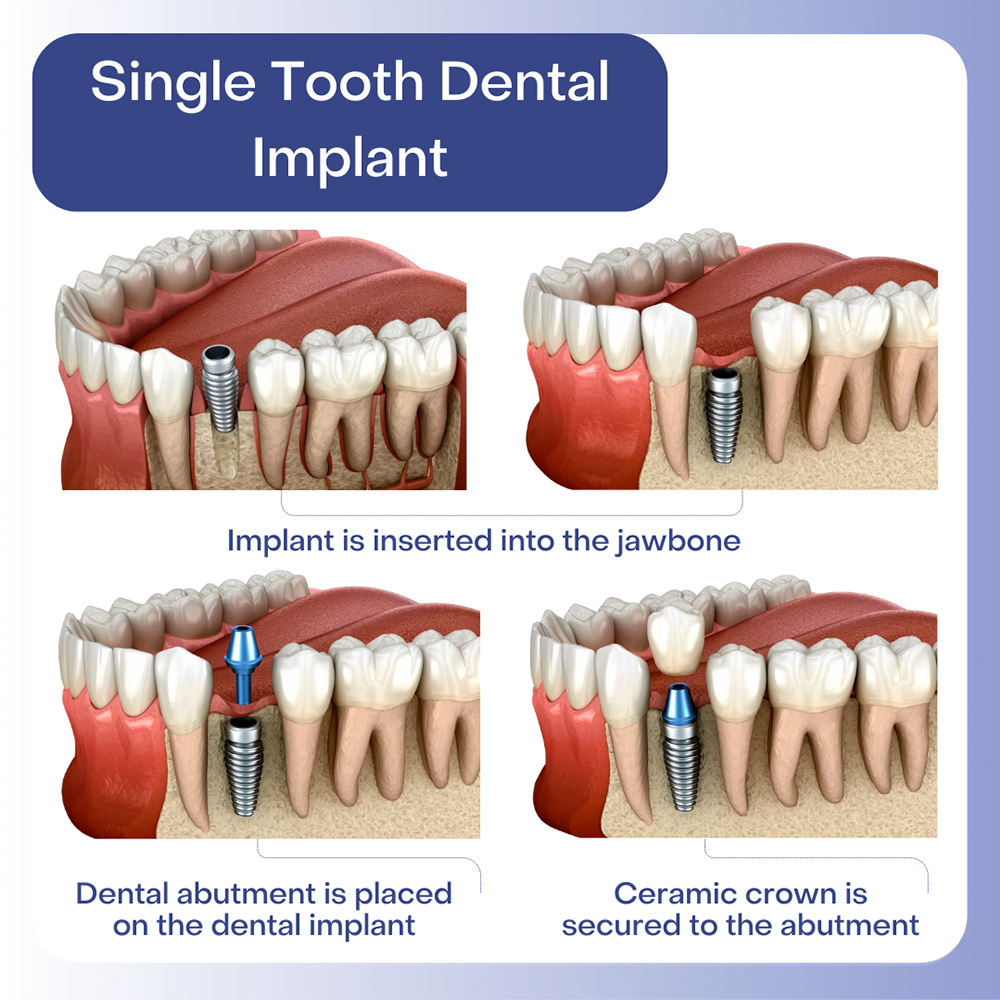Indicators on Dental Sense You Should Know
Table of ContentsDental Sense Can Be Fun For EveryoneFascination About Dental SenseDental Sense - An OverviewThings about Dental Sense
are clinical devices surgically implanted into the jaw to bring back a person's capacity to chew or their appearance. They give support for fabricated (fake) teeth, such as crowns, bridges, or dentures. When a tooth is lost because of injury or illness, a person can experience difficulties such as quick bone loss, malfunctioning speech, or changes to eating patterns that lead to discomfort.Oral implant systems are composed of an oral implant body and oral implant abutment and may additionally include an abutment fixation screw. Dental implants. The dental implant body is operatively inserted in the jawbone instead of the tooth's origin. The dental implant joint is generally affixed to the implant body by the joint fixation screw and extends via gums into the mouth to sustain the attached man-made teeth
(https://canvas.instructure.com/eportfolios/3460980/home/transform-your-smile-with-wisdom-tooth-cavity-solutions-and-cosmetic-dentistry-services)Framework of The Dental Implant System selecting oral implants, talk with your oral company concerning the possible advantages and risks, and whether you are a candidate for the treatment. Things to think about: Your total wellness is an important consider determining whether you are a good prospect for oral implants, just how long it will take to recover, and how much time the dental implant may remain in area.
Cigarette smoking may affect the healing process and decrease the long-lasting success of the dental implant. The healing procedure for the implant body may take numerous months or longer, throughout which time you generally have a short-term joint instead of the tooth. the dental implant treatment: Carefully follow the oral health directions provided to you by your dental supplier.
Our Dental Sense Diaries
Implant failure can cause the need for an additional procedure to deal with or change the implant system. Brings back the capability to eat Brings back aesthetic look Helps keep the jawbone from diminishing due to bone loss Protects the health of the surrounding bone and periodontals Assists keep nearby (nearby) teeth stable Boosts lifestyle Damages to bordering natural teeth during implant placement Injury to the surrounding cells throughout surgical procedure, such as sinus opening Injury throughout surgical treatment (as an example, fracture of surrounding jawbone) Inadequate feature, such as feeling like the teeth do not attack together typically A feeling that the tooth is loose or twisting in area arising from an abutment screw loosening Implant body failure (looseness of the implant body) due to systemic infection, which may be more likely in people with unchecked diabetes mellitus because of neighborhood infection in bone and gums sustaining the dental implant body because of delayed recovery, which might be most likely in people that smoke Trouble cleaning the gum tissues around the dental implant, causing inadequate oral hygiene Neglected periodontal disease Post-surgical tingling due to nerve impingement or damage Always notify healthcare carriers and imaging professionals that you have oral implants before any type of magnetic resonance imaging (MRI) or x-ray procedures.
FDA is not familiar with any type of damaging events reported for MRI or x-ray procedures with dental implants. Dental implants systems are generally made of materials that adhere to worldwide consensus requirements of the International Company for Standardization (ISO) or ASTM International. These requirements have information of what makes a risk-free product.

An oral implant is a structure that replaces a missing out on tooth. With screw-like gadgets, the doctor inserts a you can check here dental implant right into the jawbone, and it serves as an anchor for a man-made tooth, called a crown. A device called an abutment links the man-made tooth to the oral implant. The crown is custom-made to fit the individual's mouth and match the color of their teeth.
All About Dental Sense
Some individuals are not qualified for dental implant surgical treatment. It is for oral specialists to operate on individuals with: severe illnessuncontrollable metabolic diseasebone or soft tissue disease or infectionIf these problems are solved, an individual can have the surgery. In, oral cosmetic surgeons refrain from operating individuals with: If individuals with any of the above go through dental implant surgical procedure, there is a greater threat of the implant stopping working.

Oral dental implant surgery is a personalized procedure. Give you time to heal. Connect the post and last crown, bridge or denture.
Next off, your cosmetic surgeon will very carefully position the oral implant into your jaw. If your dental implant is near the front of your mouth, your dental professional will certainly make a short-term tooth for you to wear until you recover.
The Basic Principles Of Dental Sense
Your company can tell you what to anticipate in your situation. During the healing stage, your jawbone should fuse to the dental implant. This procedure, called osseointegration, is vital for stability and long-term success. This procedure can take anywhere from three to nine months. In many cases, it may take much longer.
As soon as your implant heals, your dental expert can connect the abutment (tiny adapter message) and your final remediation (crown, bridge or denture). This normally takes concerning one hour to finish and may call for a second small surgical procedure. You shouldn't feel any pain during your oral implant treatment due to the fact that your provider will utilize drug to numb your gums.